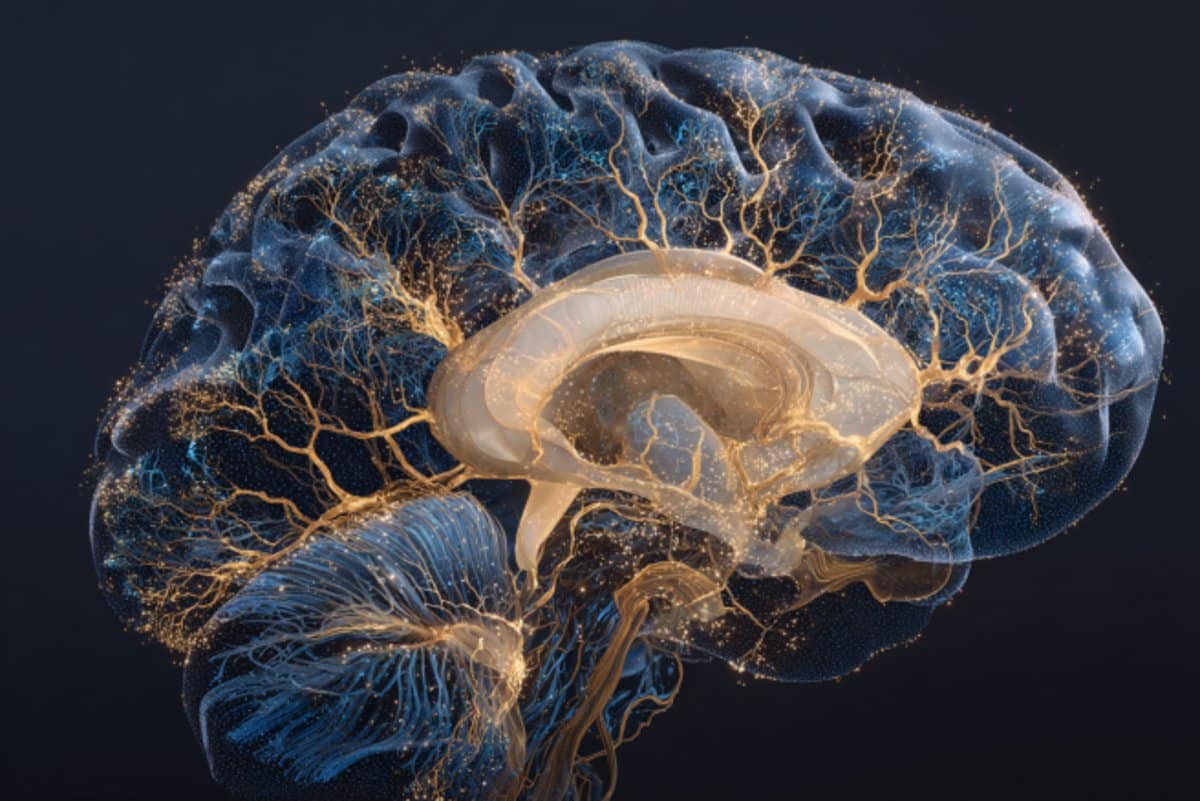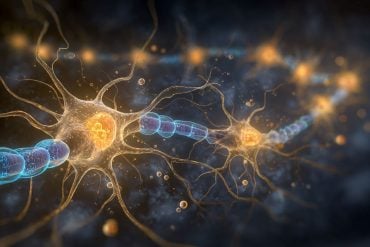Summary: A new study has identified a key brain hub in the medial prefrontal cortex that regulates stress responses and social behavior, offering critical insights into psychiatric conditions. Using advanced imaging and AI mapping in mice, scientists charted how these regions integrate sensory and bodily signals to control emotional stability.
The findings explain long-observed personality shifts, like those in the famous Phineas Gage case, and provide a cellular-level map relevant to humans. This discovery lays the groundwork for targeted therapies to address disorders such as PTSD, depression, and anxiety.
Key Facts:
- New Brain Hub: The medial prefrontal cortex integrates sensory and internal signals to regulate stress and social behavior.
- Advanced Tools: Genetic labeling, 3D brain imaging, and AI mapping revealed the precise neural circuits.
- Therapeutic Potential: The findings open new pathways for targeted treatments of psychiatric disorders.
Source: UCLA
A UCLA study has mapped a critical brain hub in mice that regulates stress responses and social behavior, shedding new light on the neural roots of psychiatric conditions such as post-traumatic stress disorder, depression and anxiety.
The study, published in the journal Nature, reveals how a region of the medial prefrontal cortex, which has long been linked to personality and emotional regulation, integrates information across the brain to coordinate physiological and behavioral responses.

The findings help explain classic cases of personality changes and open new paths toward understanding and treating complex neuropsychiatric disorders, said lead author Dr. Hong Wei Dong, professor of neurobiology at UCLA Health and director of the UCLA Brain Research & Artificial Intelligence Nexus.
“This work gives us a wiring diagram of one of the brain’s most mysterious control centers,” said Dong. “It provides a foundation for developing targeted therapies for stress-related and social dysfunction disorders.”
For more than 170 years, the case of a railroad worker named Phineas Gage whose frontal lobe injury dramatically altered his personality has symbolized the mystery of how the brain regulates emotion and behavior. Gage became impulsive, socially uninhibited and struggled with decision-making.
These symptoms helped scientists identify the prefrontal cortex as a key regulator of personality, social behavior and emotional control. However, the detailed neural circuits and mechanisms underlying these changes have remained elusive.
In his study, Dong’s team used advanced genetic labeling, 3D brain imaging and AI-driven circuit mapping to chart the intricate wiring of the medial prefrontal cortex (MPF or mPFC) in mice, including the dorsal peduncular area (DP) and infralimbic area (ILA).
These regions act as hubs that integrate sensory and internal body signals to coordinate emotional and physiological responses.
The findings reveal how these hubs govern emotional stability and stress regulation, offering a cellular-level blueprint of circuits that are conserved in the human vmPFC.
“Our work closes a critical gap in understanding how these brain regions orchestrate complex behaviors and stress responses,” said Dong.
“By identifying the precise circuits involved, we open the door to developing better diagnostic tools and targeted therapies for psychiatric and neurological disorders.”
The findings have broad implications for public health, offering new hope for millions affected by neuropsychiatric conditions worldwide.
By translating this foundational knowledge into actionable insights, Dong said the findings can help drive the next generation of treatments for emotional and stress-related disorders.
About this brain mapping and mental health research news
Author: Will Houston
Source: UCLA
Contact: Will Houston – UCLA
Image: The image is credited to Neuroscience News
Original Research: Open access.
“Neural networks of the mouse visceromotor cortex” by Hong Wei Dong et al. Nature
Abstract
Neural networks of the mouse visceromotor cortex
The medial prefrontal cortex (MPF) regulates autonomic and neuroendocrine responses to stress and coordinates goal-directed behaviours such as attention, decision-making and social interactions.
However, the underlying mechanisms remain unclear due to incomplete circuit-level MPF characterization.
Here, using integrated neuroanatomical, physiological and behavioural approaches, we construct a comprehensive wiring diagram of the MPF, focused on the dorsal peduncular area (DP)—a poorly understood prefrontal area.
We identify its deep (DPd) and superficial (DPs) layers, along with the infralimbic area, as major components of the visceromotor cortex that directly project to hypothalamic and brainstem structures to govern neuroendocrine, sympathetic and parasympathetic output.
Notably, the DP functions as a network hub integrating diverse cortical inputs and modulating goal-directed behaviour through a largely unidirectional cortical information flow.
On the basis of the mesoscale MPF connectome, we propose a unified network model in which distinct MPF areas orchestrate physiological and behavioural responses to internal and external stimuli.






